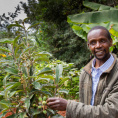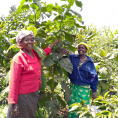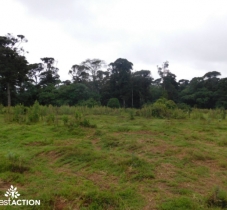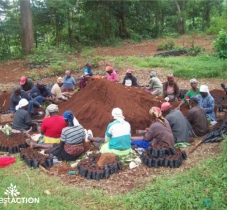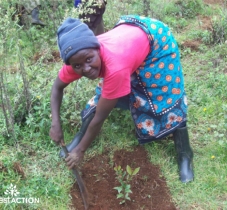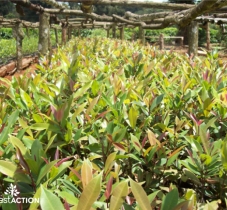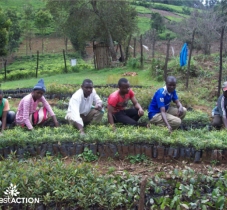Project description
In the heart of the Mount Kenya protected forest, this project has a threefold objective: to support the restoration of Mount Kenya National Park; to create agroforestery systems to enable local populations to protect their cultures and diversify their sources of income; and to raise awareness among the younger generation in local schools.
Overview of the project
- Number of trees to be planted: 660 000 trees over 3 years
- Species planted: Syzygium guineense, Prunusa Africana, Podocarpus falcatus, Croton megalocarpus, Vitex keniensis, Grevillea robusta...
- Project type: reforestation and agroforestry
- Planting period: April to May
The context of the project
More than 300,000 members of various ethnic communities, such as the Kikuyu and Maasai, depend on the Mount Kenya forest for their daily lives, drawing on its resources of fruit, medicinal plants and water. Their crops - both cash and food crops - need rain to grow in good conditions. But droughts have increased in recent years, caused in particular by deforestation in the region, which has changed weather patterns. As a result of population growth, the expansion of crops, and the felling of trees for charcoal production, Kenya now has only 7 percent forest cover, down from 18 percent in the early 1960s. Today, rivers flowing from the destroyed forests of Mount Kenya no longer have enough water to enable communities to irrigate their crops.
In this context, Reforest'Action is partnering with the NGO Trees For Kenya, which has been working in the Mount Kenya region since 2012, in partnership with the Kenya Forest Service, which is responsible for protecting the country's natural forests. The Mount Kenya forest experienced massive deforestation between the 1960s and 1990s. It is now protected by law, but has never regenerated. The government is therefore encouraging NGOs and local communities to restore it by planting indigenous trees. Since 2012, Trees For Kenya has planted more than 350,000 trees, sourced from local nurseries, in the Mount Kenya forest. This partnership with Reforest'Action will allow the NGO to expand its action, to continue to develop agroforestry systems with local producers, but also to raise awareness among the younger generation through tree planting in schools. The aim of the project is to help local communities to restore their environment in order to secure their food supply and improve their socio-economic status through the creation of an additional income from the planted trees.
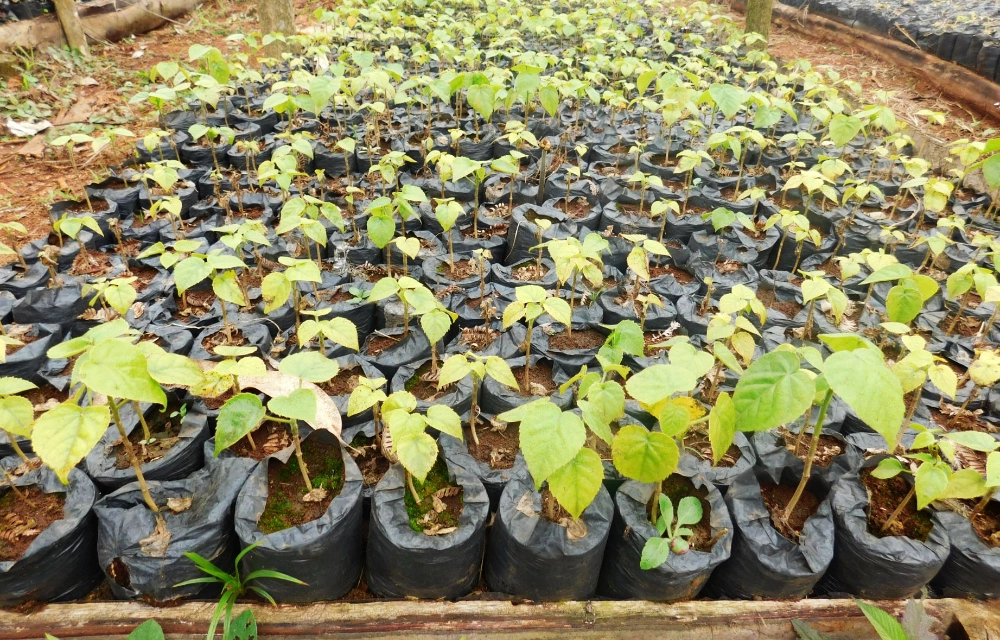
Actions in the field
Season 2019-2020
The first season of the project aimed to plant 160,000 trees and consisted of four main components:
- Forest restoration. The first season of the project reforested more than 400 hectares of degraded forest land through the planting of native tree species. In addition to the tree planting activities, local people are also involved in the production of seedlings in more than 20 community nurseries, the preparation of the land by removing brush and invasive species, and the protection and maintenance of the planted trees.
- Agroforestry. In the Mount Kenya region, communities grow tea, coffee, maize, beans, cassava, sweet potatoes and bananas. Trees for Kenya is training local farmers to include trees as an integral component of their agriculture through the creation of agroforestry systems. Over 500 farmers were involved in 2019-2020 in planting trees within their cultivated fields. Trees for Kenya has been providing these trees to farmers during the rainy seasons and training them in agroforestry.
- Planting in schools. The planting of trees in schools helps to educate the younger generation to take better care of their environment. The planted trees are managed by the schoolchildren, who water them and weed them twice a year to ensure that they grow in optimal conditions. Each student is assigned a certain number of trees and is responsible for them until they leave school.
- Awareness raising. In order to prevent future deforestation, Trees for Kenya raises awareness in these communities about the importance of preserving the forests and reporting any illegal activities within them.
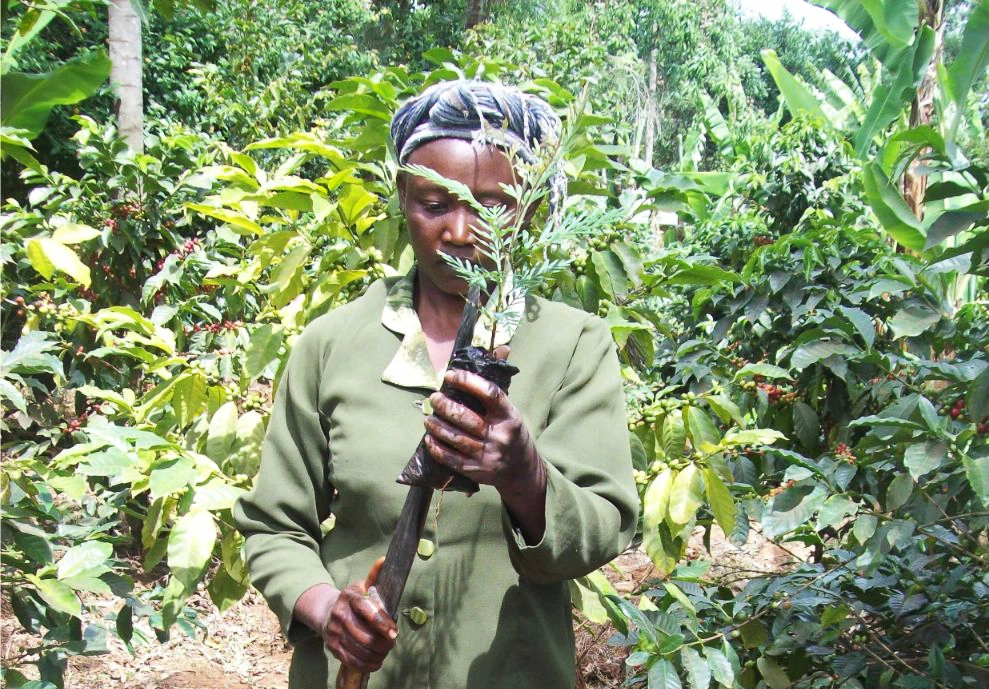
Season 2020-2021
The project has been renewed for the 2020-2021 season, with the planting of 250,000 trees funded by Hennessy to regenerate 250 hectares. This planting season was carried out alongside 656 local farmers and 17 schools in Embu County. Each farmer involved in the project planted agroforestry trees on their land, either intercropped with other food crops, in alleys or as hedgerows to demarcate plots. The 203,204 trees planted in agroforestry will, among other things, help farmers revitalise their farmland and act as green manure for their crop production. They will also provide fodder for livestock and fruit for local community food security and income generation. They will also protect the underlying crops from gales or heavy rainfall and combat soil erosion. The schools associated with the project have planted a total of 9,230 trees by involving their pupils in raising awareness of forest preservation and biodiversity. In parallel, 37,566 trees were planted in the degraded forests of Mount Kenya.
Season 2021-2022
Thanks to the support of the House of Hennessy, the project has been extended for the 2021-2022 season, following the same design as the previous seasons, with the planting of 250,000 additional trees financed by Hennessy to regenerate a total of 500 hectares. Of these, 65,000 trees were planted to restore forests on Mount Kenya, 165,000 trees were planted by 420 local farmers in agroforestry, and 20,000 trees were planted in 15 schools in Embu County.
Species planted on the project
A great diversity of species is planted on the project within the different zones:
- Syzygium guineense, Prunusa Africana, Podocarpus falcatus, Croton megalocarpus, Vitex keniensis : these forest and indigenous species, with medicinal and honey-making properties, will help restore the heart of the Mount Kenya forest.
- Grevillea robusta and Acrocarpus fraxinifolius: these agroforestry species will be planted in farmers' fields to create a protective cover for their crops and enrich the soil by fixing nitrogen. They will also provide firewood while preserving the wild forest.
- Markhamia lutea and Calliandra calothyrsus: these shrub species, planted in the fields as quickset hedges, will enrich the soil and create fodder for livestock.
- Avocado and tamarillo trees: these fruit species, planted in agroforestry, will enable the harvesting of fruit, which will be consumed directly by the population or sold on local markets in order to generate additional income.
Benefits of the project
- Protection of water resources: the restoration of the Mount Kenya forest will increase the volume of water in the surrounding rivers, thanks to a better recharge of the underground water tables made possible by the organic activity of the forest soil. The restored forest will again be able to regulate climatic cycles and bring rain back into the region.
- Creation of habitats for biodiversity: the restored forest will welcome over the years an increased wildlife (elephants, monkeys, buffaloes, gazelles...), which has now disappeared from the region.
- Improvement of food security: thanks to the irrigation of crops made possible by the return of rivers and rains, cultivated fields will be more fertile and harvests will improve over the years. Planting trees in the fields will also enrich the soil, provide shade for crops and thus improve people's livelihoods.
- Raising the awareness of local populations to conserve their environment and protect forests through school reforestation programs.
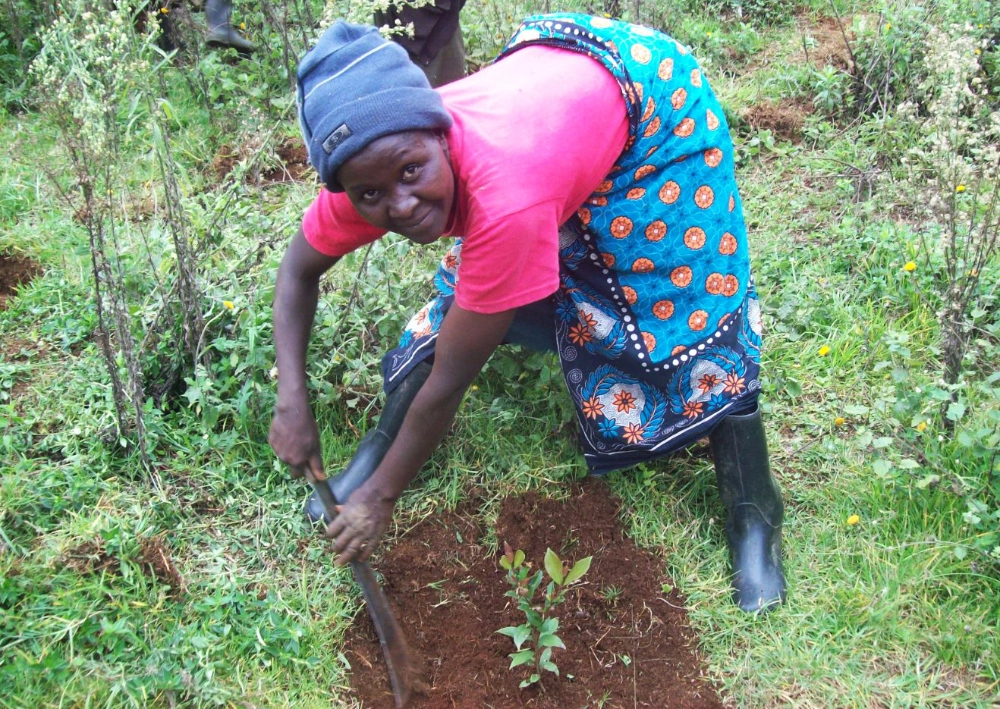
News from the field
400 000 trees planted in Kenya: report of our mission on the spotEnd of July 2021, we went to Kenya to monitor our reforestation project.
End of July 2021, we went to Kenya to monitor our reforestation project.
Reforestation and agroforestry in the Mount Kenya regionIn Kenya, the new rainy season, starting in April 2021, is favourable to the resumption of plantatio
In Kenya, the new rainy season, starting in April 2021, is favourable to the resumption of plantations in the Mount Kenya region.



